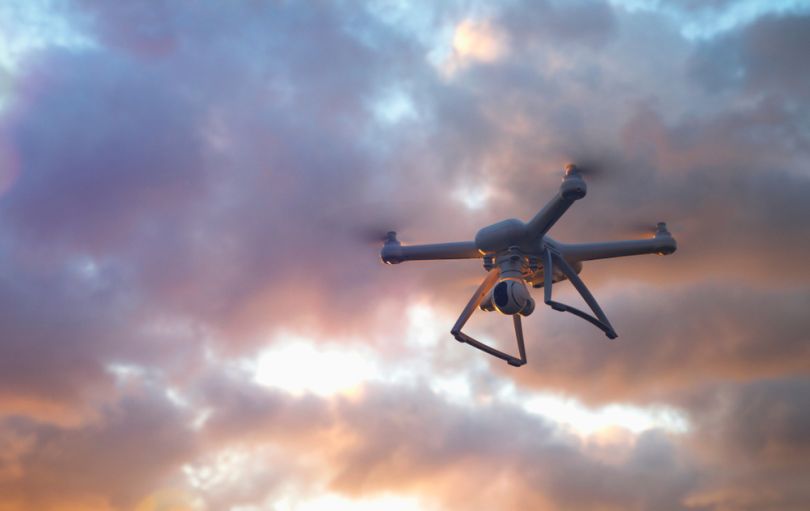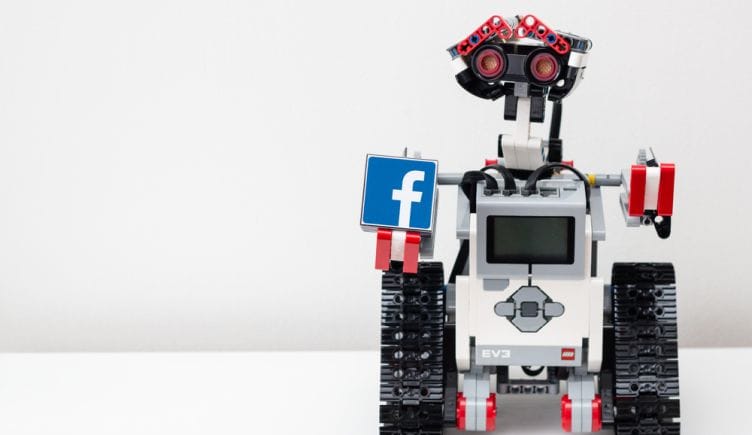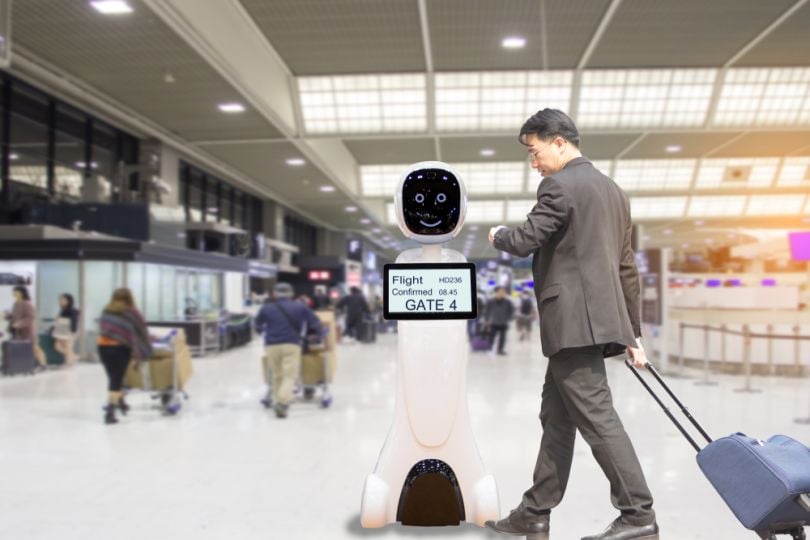 Image: Shutterstock / Built In
Image: Shutterstock / Built In
It’s one thing to design a robot, it’s another thing to bring it to life. But that’s where robotic programming languages come in, giving robots the ability and “intelligence” to complete important tasks in very human-like ways.
While there are hundreds of programming languages that exist, only a few are widely used in robotics today. The most popular programming languages, like C++ and Python, have cornered the market in terms of function and ease of use. Meanwhile older, more outdated languages, like Pascal, continue to serve as the backbone for more tailored, proprietary languages and robotic operating systems used by leading industrial robot companies.
Top Robotic Programming Languages
- C/C++
- C#
- Hardware Description Languages
- Java
- Lisp
- MATLAB
- Pascal
- Python
What Is the Best Programming Language for Robotics?
If you think of a robot as a puppet, the lines of code are the strings that bring form and function to robots, whether they’re vacuuming floors or, more frequently, working on assembly lines. And like strings, some programming languages and the code they help humans write are stronger than others.
C, C++ and Python are all popular programming languages used across the robotics industry, from the AI functionality behind a humanoid robot to the motor function of a robotic arm — the signature of industrial robots. These languages are often efficient and powerful, and frequently used across disciplines like computer science. Thanks to their widespread use, these programming languages have a strong network of users engineers can reach out to for help.
As the market for robots continues to grow for use in manufacturing and other industries like healthcare and service sectors, demand for highly skilled developers and engineers steeped in C, C++ and Python will continue to increase as well.
While engineers working on other types of robots rely on a combination of popular programming languages to make their robots fully functional, most top industrial robot companies like ABB, Comau and Fanuc have developed their own proprietary robotic programming languages their engineers learn on the job. At the heart of many of these proprietary programming languages is Pascal, making it a popular programming language for would-be engineers to learn to familiarize themselves with some of the future languages they may have to work with. Pascal not only teaches developers best practices in robotic programming, it teaches the basic functionality and technical details behind many of the leading industrial robots.
No matter the robotic programming language one chooses to master first, the knowledge gained will be helpful in other future robotic endeavors. Here are a few more robotic programming languages every budding programming and developer wanting to work with robots should know.
More on Programming10 Games to Level Up Your Programming Skills
Robotic Programming Languages to Know
C/C++
When it comes to programming languages, C and C++ are often considered the gold standard. Both are mature general-purpose programming languages and provide real-time performance, meaning programmed actions are executed at a specified time, which is important in robotics since a robot’s main responsibility is to complete a task when humans want it to. As far as differences between the two programming languages, C++ is just a more enhanced version of C that supports objects and classes.
Though C and C++ typically require more lines of code and aren’t as user-friendly as other programming languages like Python, both programming languages have a distinct advantage in that many hardware libraries rely on C or C++ in their own development, which improves compatibility with critical hardware.
More on C++How to Write Clean Exception Handling Code in C++
C#
C# is Microsoft’s proprietary programming language and is used within Microsoft’s Visual C# Express, a free development support program. C# is run on .NET, Microsoft’s software development framework, and is often used to develop network and communication structures like ports and sockets — making it a good choice for integrating neural network systems into robotic applications.
Hardware Description Languages (HDLs)
Circuits are a critical component in robotics and where hardware description languages play a key role in robotic programming. HDLs, like Verilog and VHSIC Hardware Description Language (or VHDL), make programming circuits easier by allowing developers to describe circuits using words and symbols. One important thing to note: To use hardware description languages a strong background in electronics is often necessary, as multiple processors are typically working at the same time.
Java
Java is another popular programming language that gets robots up and running in a more human-like fashion. An interpretive programming language, Java isn’t built into machine code — the commands are interpreted by the Java Virtual Machine — which allows the same code to run on different computers. It’s popular among developers working in artificial intelligence as neural networks can be created. Java was even used to program IBM’s supercomputer Watson, which helps businesses integrate AI into their operations.
Lisp
One of the oldest programming languages used in robotics, Lisp is easy to use. It’s also having a resurgence for use in creating AI and robotic applications, as much of the robotic operating system — the open-source framework used to develop robotic applications — is written in this programming language. Important features that make Lisp easy to use include tree, or nonlinear, data structures; automated storage management; and syntax highlighting, which displays code in different colors and fonts depending on category.
MATLAB
For developers wanting to analyze data and run simulations, and develop and implement robotic control systems with specially-designed interfaces, MATLAB is a great tool. When paired with the Robotics Toolbox for MATLAB, which includes functions for kinematics, dynamics and trajectory generation, developers can create systems for robotic arm research and simulations.
Pascal
Pascal is the inspiration behind many proprietary programming languages. Though very few robots are programmed using Pascal, many industrial robot companies, such as ABB and Kuka, use Pascal as a base for their own in-house programming languages. Though outdated, it’s considered a great way for new developers to learn basic functions and technical details behind those proprietary languages, while providing an opportunity for early career developers to learn best practices in robotic programming.
More on RobotsDo Robots Have a Race?
Python
One of the easiest programming languages to learn — and one of the most popular, alongside C and C++ — is Python. An interpreted language, Python has a robust selection of libraries, which makes implementing basic functions even easier. Fewer lines of code are required with Python as well, making it faster to use — and to learn — than C, C++ and Java. Python reduces programming time by eliminating the need to define and cast variable types and allow motions to be coded in the same script. Given its wide use and popularity, Python also has a large community of developers, which can be an excellent resource for novices to tap into during the learning phase.
If the website content violates your rights, please contact us to delete it。








